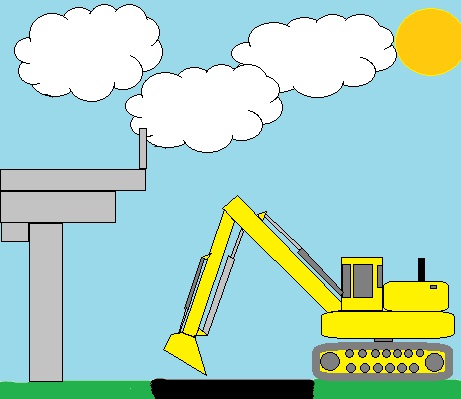Information
-
Contract No.
-
Date and Time
-
Location
-
Contractor
-
VicRoads Business Area
Site Information
-
Surveillance by:
-
Contractor Rep:
-
OHS Representative
-
Activity being undertaken
-
Estimated daily traffic volume
-
Clearance between workers and traffic
-
Permanent Traffic Speed through area
- 40
- 50
- 60
- 70
- 80
- 90
- 100
- 110
-
Worksite traffic speed
- 40
- 50
- 60
- 70
- 80
- 90
- 100
- 110
SWMS / Training
1. Safe Work Method Statements (SWMSs)
-
1.1(a) Pre-start daily site/project hazard analysis completed and appropriate controls conveyed to employees shift contractors and sub-contractors.
-
1.1(b) Appropriate controls conveyed to employees shift contractors and sub-contractors (ie via toolbox meeting minutes or prestart meetings).
-
1.2. Safe Work Method Statements reviewed to compliment Item 1.1
-
1.3. I observed the following contractors/sub-contractors SWMS's being worked as stipulated:
Activities
-
Activity
2. Training
-
2.1. Induction Training Records for shift contractors/sub-contractors sighted.
-
2.2. Construction Induction Records for shift contractors/sub-contractors (red or white card)
-
2.3. Safe Work Method Statements training records sighted for shift contractors/sub-contractors
-
2.4. Competency training records sighted for shift contractors/sub-contractors.
Site Safety
3. Site Safety (all items must be checked and recorded in accordance with the Project Surveillance Plan)
-
3.1. Site amenities in accordance with Health and Safety Co-ordination Plan (eg. Toilets, lunch room, water)
-
3.2. Safe Operating Procedures on site.
-
3.3. Are people on site following site safety rules?
-
3.4. Permit to work documentation completed (power/gas etc).
-
3.5. Personnel Protective Equipment and clothing used/worn.
-
3.6. Plant speed restrictions/no go zones for pedestrians enforced.
-
3.7. Summary and records of accident/incident reports and investigations maintained on site.
-
3.8. Corrective actions for accidents/WorkSafe notices/safety inspections/hazard reports implemented and working.
-
3.9. Plant and equipment daily safety checks completed.
-
3.10. Identified faults signed off as complete.
-
3.11. Flashing lights/reversing cameras/proximity warning devices/reversing alarms operational.
-
3.12. Communication systems in place for reversing plant.
-
3.13. Dangerous Goods Register/MSDSs current
-
3.14. Dangerous goods storage secure and signage displayed
Worksite Traffic Management
4. Worksite Traffic Management
Planning
-
4.1. Has a traffic management plan been selected or provided?
-
4.2. Is the plan available for inspection?
-
4.3. Is the plan relevant to the work?
-
4.4. Is there a valid MOA?
-
4.5. Are documented changes (if any) to the traffic management plan available for inspections?
-
4.6. Have temporary roadworks speed limits been determined correctly? (Eg. Code of Practice for Worksite Safety - Traffic Management)
Advance Warning / Signage
-
4.7. Are all roadworks signs and devices installed according to the traffic management plan?
-
4.8. Have any contradictory, distracting or superfluous signs or markings been covered up or removed?
-
4.9. Are signs appropriate for current conditions? (Eg. Symbolic worker signed not displayed/not visible when no workers on site, road condition signs after worksite vacated)
-
4.10. Is signage suitably placed, especially for vehicles approaching at high speed? (Eg. Check sight distance, advance warning sign distance, height of signs above ground, vehicle queue length not beyond signage, check potential 'end of queue' issues)
-
4.11. Are multi-message signs being used correctly?
-
4.12. Are the signed free from damage and defect? (Eg. Easy to read, check shadow and glare issues).
-
4.13. Are sign mountings secure, stable?
-
4.14. Are signs in pairs where needed? (Note: recommended on high speed high volume roads and multi-lane roads).
-
4.15. Are flashing arrows signs available and in use where required?
-
4.16. Are sign sizes correct?
Worksite
-
4.17. High visibility clothing appropriate for conditions and used and worn correctly? (Eg. Day/night, meet AS4602-1999 and AS1906.4-1997, clean, fastened, personnel visible)
Work Zone Seperation
-
4.18. Are clearances between workers and adjacent traffic being maintained?
-
4.19. Are the safety barriers the same as depicted in the TMP and are 'no-go' zones observed?
-
4.20. Has containment fence been installed where required? (Eg. Workers/pedestrians/cyclists separation)
Other Road Users
-
4.21. Are controls in place to minimise any congestion?
-
4.22. Are the works impacting on public transport?
-
4.23. Are pedestrians, cyclists and wheelchair access being catered for on site?
-
4.24. Are side road and property access being impacted by the works?
Comments
-
5. Comments, in particular any Project/Site Specific Issues not included on checklist eg. Site hazards detected during the course of the Contract, high risk construction work.








